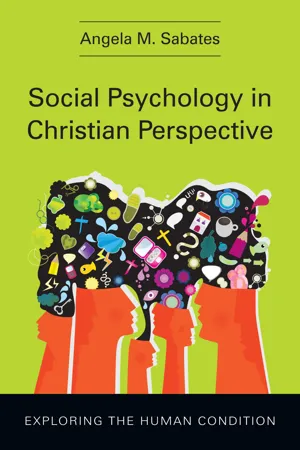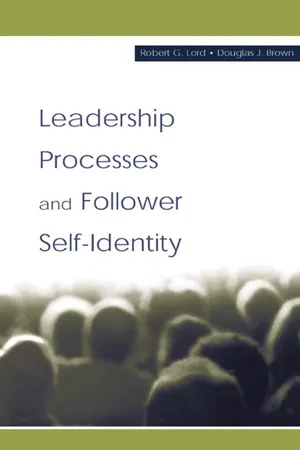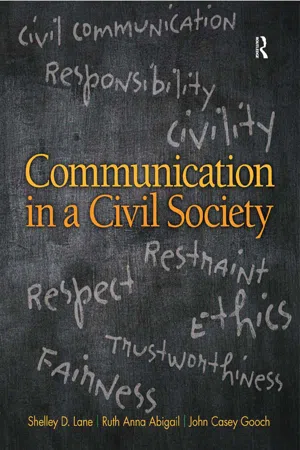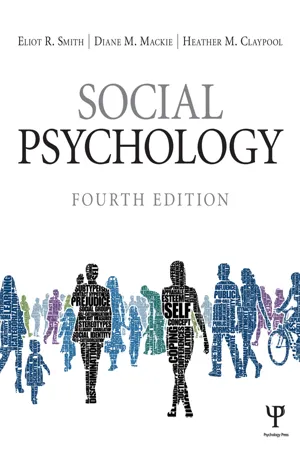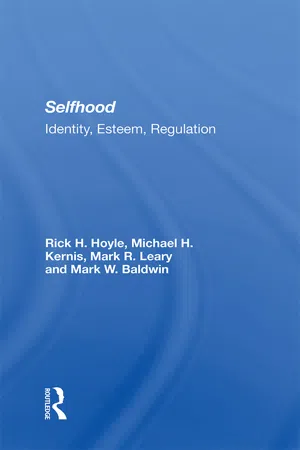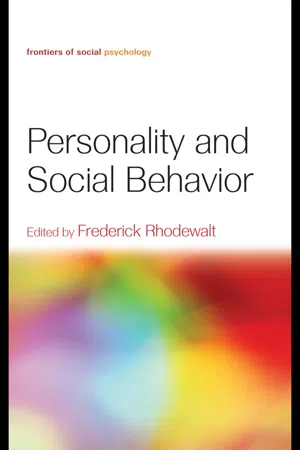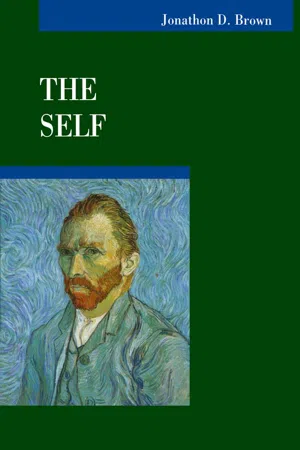Psychology
Self-Concept and Behavior
Self-concept refers to the beliefs and perceptions individuals hold about themselves, including their abilities, values, and identity. Behavior is the actions and reactions that individuals exhibit in response to internal and external stimuli. The self-concept influences behavior by shaping how individuals perceive and interpret situations, which in turn affects their choices and actions.
Written by Perlego with AI-assistance
Related key terms
Related key terms
1 of 4
Related key terms
1 of 3
11 Key excerpts on "Self-Concept and Behavior"
- eBook - ePub
Self-presentation
Impression Management And Interpersonal Behavior
- Mark R Leary(Author)
- 2019(Publication Date)
- Routledge(Publisher)
A similar example involves daily grooming. Most mornings, I stumble into the bathroom to shave, shower, and dress without any thoughts of impression management. (I may have other self-relevant thoughts, however, such as “I hate getting up,” “I feel like hell,” or whatever.) Even so, many of these behaviors are self-presentational. When I was little, my parents had to remind me to comb my hair, then later I had to consciously remind myself. Now, I do it pretty much without thinking.The Self-Concept and Phenomenal Self
The Self-Concept
When people are thinking about themselves (that is, when their self is active), how they present themselves to other people is affected by whatever they are thinking about themselves at the time. The self-concept consists of the set of beliefs that a person holds about him- or herself. Just as we have beliefs about things in the external world (including other people), we also have beliefs about ourselves. These include beliefs about our physical bodies (our appearance, health, level of fitness, and so on), our personal characteristics (such as our personality, intelligence, and abilities), our social relationships (including our relationships with family members, friends, co-workers, and even enemies), the roles we play (student, accountant, teacher, salesperson, or what-ever), the beliefs we consciously hold (such as our religious convictions, attitudes, and philosophy of life), our personal histories, and even our possessions (we recognize that we own certain books, cars, clothing, stereo equipment, and so on).The self-concept has been compared to a person’s “theory” about what he or she is like (Epstein, 1973). Like a theory, the self-concept not only contains facts that we believe are true about ourselves but also untested hypotheses. Your assumptions about how you would respond in new situations are essentially hypotheses that you have derived from the theory you hold about yourself.The self-concept is also like a theory in the sense that people use it to interpret their experiences. Two scientists who hold different theoretical orientations may interpret the same experimental observation in two very different ways. Similarly, two people with different self-theories may interpret the same event differently. If your self-theory (i.e., your self-concept) says you are intelligent, you may attribute a poor test grade to the teacher’s unfairness or to the fact you didn’t study enough. On the other hand, if your self-theory says that you have the intelligence of a baboon, you might interpret a poor test score as a reflection on your intelligence. - eBook - ePub
Social Psychology in Christian Perspective
Exploring the Human Condition
- Angela M. Sabates(Author)
- 2012(Publication Date)
- IVP Academic(Publisher)
interpersonal level of behavior, include a chapter on the self toward the beginning of the text. Nevertheless, beginning with a closer look at the different aspects of the self actually makes sense. For example, since social behavior could arguably be described as the interaction among and between different collections of selves, then understanding more about this concept would be especially important. For one thing, it could reveal a lot about the human condition and how it is expressed in social interaction. In addition, knowledge of the self can help us better understand its relationship to all of the other social psychological concepts such as group influence, social perception, helping and others that will be discussed in later chapters.From the perspective that all individuals were created in God’s image, the self constitutes an important part of our created being. This area of research, then, can help us explore the complexity of the human condition, including its potential for both self-centered and other-centered motives.It is important to remember that the different concepts in social psychology (group influence, persuasion, etc.) are ultimately all interrelated and their effects are reciprocal. Thus, having a separate chapter on the self is not meant to obscure the relationship of the individual with the social context. This point will be clearer once you begin to understand more fully the role of the self in the various aspects of social functioning as you go through the text.As Leary (2007) notes, social psychology research on the self has been quite broad, encompassing different emphases ranging from concepts related to self-perception to concepts related to emotional processes such as self-esteem enhancement and self-conscious motives. In general, regardless of the research focus, the questions mostly emphasize understanding how social interactions help define, develop and alter the self and how the self is motivated in light of those relationships. As with all of the concepts studied by social psychologists, the various questions regarding the self are interrelated. - eBook - ePub
Interpersonal Communication
Competence and Contexts
- Shelley D. Lane(Author)
- 2016(Publication Date)
- Routledge(Publisher)
Seligman, PhD. Professor of Psychology, University of Pennsylvania. Reprinted with permission. Characteristics and Components of the Self-Concept Our self-concept is affected by the characteristics we believe we possess and has many components. Characteristics and components associated with the self-concept include self-image and self-esteem, its multidimensional nature, the relationship between self-concept and self-disclosure, and its subjective character. Self-Image and Self-Esteem Take a look at Figure 3.2, “The Self-Concept.” This figure illustrates the idea that aspects of our self-concept can be organized according to our beliefs and evaluations about ourselves and the contexts that influence us. At the beginning of this chapter, self-concept was defined as how we perceive ourselves. Our self-concept is affected by the characteristics we believe we possess (e.g., strengths and weaknesses, personality traits) and how we evaluate these characteristics. Our self-concept, located on the top of the hierarchy, is made up of self-image and self-esteem, which are located directly underneath. Figure 3.2 The Self-Concept What are the characteristics and components of the self-concept? Self-Image The self-image is a descriptive term; it refers to the characteristics we believe we possess. Our self-image may include the roles we perceive we inhabit, the words we use when we describe ourselves, and how we believe others perceive us. For example, if you describe yourself as a student who does volunteer work and who is looking for a mate, you have communicated several aspects of your self-image (the roles of student, giving citizen, and someone who desires a relationship). Our self-image also involves how others see us. We use other people’s comments to check our self-perceptions, and they reinforce or change the perception of what and who we are. For instance, you may perceive yourself as someone who is unselfish and generous - eBook - ePub
- Robert G. Lord, Douglas J. Brown(Authors)
- 2003(Publication Date)
- Psychology Press(Publisher)
2The Working Self-Concept and BehaviorWe explained in chapter 1 that our approach to understanding leadership was to work backwards, using well-established psychological theories as a basis for analyzing potential leadership activities and their consequences for followers. We also suggested that the key to understanding effective leadership was to understand follower self-concepts and how a leader influences these cognitive-affective mental structures. In this chapter we address several questions that provide the needed psychological background for this approach to leadership: What is the self-concept and how does it vary as a function of context? What aspects of a follower’s self-concept are most critical to understanding leadership effectiveness? What processes and principles explain the linkage of self-structures to cognitions, affect, and behavior? These questions can be answered by understanding what self-theorists mean by the term working self-concept (WSC) and its role in self-regulation. We discuss these issues now.WHAT IS THE SELF-CONCEPT?
Definition and function
In summarizing William James’ seminal perspective on the self, Kihlstrom and S. B. Klein (1994) stated, “the self is the unquestionable, elementary, universal fact of mental life, and the fundamental unit of analysis for a science of mental life. It is the problem about which everything else revolves” (p. 155). Because the mind can both represent the person who embodies it and objects or events in the external world, Kihlstron and S. B. Klein noted that the self is the point at which cognitive, personality, and social psychology meet. Thus, understanding the self requires an integration of several areas of psychology. We touch on these streams of thought in this section, and then we clarify our definition of the self-concept - eBook - ePub
- Shelley D. Lane, Ruth Anna Abigail, John Casey Gooch(Authors)
- 2016(Publication Date)
- Routledge(Publisher)
self-concept refers to how we perceive ourselves. No matter how we perceive ourselves or how others perceive us, the self-concept is inextricably entwined with perception and communication.Describe the relationship among perception, self-concept, and civility.Some scholars contend that there is a connection between uncivil discourse and words used to describe the self. These scholars maintain that todays “vocabulary of the self” reflects the overemphasis on individualism as a societal value and is devoid of responsibility and accountability. Shifting our perception from the extreme individualistic sense of self to self-control (restraint) and self-discipline will promote civil interaction and benefit society.Identify the three stages that make up the perception process.Perception is the process of selecting, organizing, and interpreting sensory information. During selection, we select from the environment the stimuli to which we will attend. Organization occurs when we categorize the stimuli we have selected from the environment to make sense of it. Interpretation occurs when we assign meaning to the stimuli that we have selected and organized from the environment and is influenced by expectancy and familiarity.explain two theoretical perspectives about perception.Attribution theory explains exactly how we create explanations or attach meaning to our own or another’s behavior. The fundamental attribution error occurs when we tend to overemphasize inherent characteristics or personality and underempha-size situational factors when we explain the reasons for others’ behavior. The self-serving bias occurs when we tend to attribute our successful behavior to inherent characteristics or our personality and our unsuccessful behavior to situational factors. Implicit personality theory illustrates that we tend to perceive others based on a set of beliefs that tell us which characteristics relate to other characteristics. We typically believe that personality traits cluster together; therefore, if we perceive a person to have one characteristic or trait, we assume that the person will have a number of other similar traits or characteristics. Implicit personality theory contributes to the halo effect, which causes you to perceive that a person holds many positive qualities if you believe she or he possesses one or a few positive qualities. - eBook - ePub
Social Psychology
Fourth Edition
- Eliot R. Smith, Diane M. Mackie, Heather M. Claypool(Authors)
- 2014(Publication Date)
- Psychology Press(Publisher)
Despite cultural variations (described in the box), the function of self-esteem is the same for everyone. The ups and downs of self-esteem are not just meaningless fluctuations. Rather, self-esteem serves a crucial function as the self regulates our thoughts, feelings, and behavior: It signals how well we are doing in fulfilling our fundamental social motives for mastery of our environment and connectedness with others (Leary and others, 1995). People differ in their relative sensitivity to these two motives, with men’s self-esteem more influenced by successes or failures involving mastery and women’s self-esteem more affected by connectedness (Josephs, Markus, & Tafarodi, 1992). Cultural differences are important as well, as just described. For everyone, though, success and acceptance (that is, events that help us feel in control and connected to others) make us feel particularly good about ourselves, whereas failure, rejection, and loss can knock us to our knees. And, as you will see later, people with high and low self-esteem differ significantly in the ways they respond to and cope with all kinds of life experiences.EFFECTS OF THE SELF: SELF-REGULATION
What is the fundamental purpose of having a self? The answer is that what we know about ourselves functions to regulate—to control and govern—many important aspects of our lives, including our thoughts, emotions and behavior.The Self and Thoughts about Ourselves and Others
Self-knowledge serves as a framework for perceiving other people and processing social information in general.Once we have constructed a self-concept, the familiar principle of conservatism comes into operation, and we become much less open to new information about the self. A young child might begin to think of himself as tidy after noticing that he neatens up his room a few times, but once the self-concept is firmly established, people are less likely to make inferences from their behaviors to decide who they are (S. B. Klein & Loftus, 1993; Schell, Klein, & Babey, 1996). This is important in creating our sense of a stable personal identity.An established self-concept influences both the way we think about ourselves and the way we perceive and remember social information in general. For example, when we perceive others we tend to notice and use information that is important in our own self-concept (Markus, Smith, & Moreland, 1985; Sedikides & Skowronski, 1993). So if you think of yourself as honest, you may be particularly likely to note others’ honest or dishonest behaviors and to use that information in making judgments about them. The self-concept also affects memory. For example, if we make judgments about whether a series of traits are self-descriptive or not, we remember those traits better than we do if we make other judgments, such as whether the traits are positive or negative (Symons & Johnson, 1997). The self-concept tells us what types of social information are particularly important to us, so it serves as an organizing framework for perceiving and remembering information about people in general. - eBook - ePub
- Margret M. Baltes, Paul B. Baltes(Authors)
- 2014(Publication Date)
- Psychology Press(Publisher)
However, we believe that some changes that occur during the adult years may have been overlooked so far. For example, changes might occur in the “diagnostic value” that is attached by the individual to various episodes in his or her life with regard to the self (e.g., being blamed by the boss). How specific experiences are encoded and become integrated into the self-concept (and how this might change the structure of the self-knowledge) may also be highly changeable over a lifetime depending on one’s age and age-specific focus. Change in the relative importance of particular self-concept domains and in their relative order and salience needs to be an explicit focus if the change can be made observable.Change Versus Stability In Function . Whereas the distinction of content and structure is quite common in research, the question of how self-concepts are functionally related to behavior and whether or not this might be changing over time is rather open. Although, it is claimed that the self is related to almost all behavior (Combs, 1981), a considerable lack of operational linkages between Self-Concept and Behavioral consequences does exist.However, how can one expect converging evidence, if one takes into consideration the heterogeneity of conceptual and operational definitions of “the self’? There can be no doubt that self-referent knowledge is functionally related to behavior, as it is true for knowledge about other persons and objects, as well. But we have to make thorough specifications in terms of which behaviors are guided by self-referent thought, when this is likely to occur, and how this may change across a lifetime.There are some answers with regard to the function of self-concepts for behavior. It is argued, for example that the self-concept has a fundamental function for the satisfaction of “basic human needs,” that is, the need for organizing experiential data into a conceptual system and to maintain a positive pleasure and pain balance (Epstein, 1973), as well as the need for preserving a sense of continuity across time and space (Haußer, 1984). In addition, there is now a considerable amount of evidence that the self is a potent factor in processing information related to the self (Markus & Sentis, 1982; Rogers, 1980), and to other persons (Kuiper & Derry, 1980). It influences on how social interactions are categorized (Sentis & Burnstein, 1979) and on what one wants to find out about other people (Fong & Markus, 1982). Obviously, the increasing amount of research done within the information processing paradigm has contributed to a closer understanding of the functions of self-referent knowledge. - eBook - ePub
Selfhood
Identity, Esteem, Regulation
- Rick Hoyle, Michael H. Kernis, Mark R. Leary, Mark W. Baldwin(Authors)
- 2019(Publication Date)
- Routledge(Publisher)
4 Self-ConceptOne can neither see a self-concept nor touch it, and no one has succeeded as yet in adequately defining it as a hypothetical construct.—Epstein (1973, 283 )Research on the self-concept is more abundant and perhaps more diverse than research on any other topic relevant to the self-system. This intense interest seems justified because self-knowledge—the principal element of the self-concept—is the raw material from which the self-system is formed and through which it functions. In this chapter we present theory and research on the self-concept in two major sections. In the first section, we focus primarily on the content of self-knowledge and how that content affects people's views of themselves and other people. In the second major section, we turn our attention to an emerging research literature that concerns how the organization of self-knowledge affects people's understanding of themselves and others. Research endeavors in both traditions are noteworthy for the degree of innovativeness and creativity apparent in their methodology and measurement. In order to provide a sense of the challenges that research on the self-concept poses, we describe and illustrate some of the means by which self-knowledge is assessed or inferred.Varieties of Self-Knowledge
Most self-theorists agree with Allport's (1961b) suggestion that "the human mind is able to regard itself as an object in much the same way that it regards objects in the outer world" (p. 137). Accordingly, the study of how people think about themselves—their self-concept - eBook - ePub
- Frederick Rhodewalt, Frederick Rhodewalt(Authors)
- 2012(Publication Date)
- Psychology Press(Publisher)
3 The Self and Social BehaviorThe Fragile Self and Interpersonal Self-RegulationFREDERICK RHODEWALT and BENJAMIN PETERSON University of UtahPersonality represents those characteristics of individuals that give patterning, meaning, and coherence to their thinking, emotions, and behavior (Pervin, 1996). The self is one construct that serves such a role (Leary & Tangney, 2003). A vast amount of psychological research supports the claim that the self provides a principle organizing function in human behavior. Many of the major theoretical perspectives in personality posit units that are variants on the self. From psychodynamic approaches such as Erikson’s Ego Psychology to phenomenological views such as Roger’s “person centered” theory, the self is a central, coordinating unit involved in cognition, affect, motivation, self-regulation, and, most importantly, interpersonal behavior. This point is made clearly in Rogers’ (1951, p. 503) statement that, “as experiences occur in the life of the individual, they are either a) symbolized, perceived, and organized into some relationship to the self, b) ignored because there is not an evident perceived relationship to the self-structure, or c) denied symbolization or given distorted symbolization because the experience is inconsistent with the structure of the self.”A theme running through even the earliest statements about the self is that it serves as a nexus linking the individual to his or her social environment. As is the case with most important ideas in psychology, the interpersonal aspect of the self can be traced back to the influential writings of William James. In his essay “The Self,” James (1890/1952, p. 201) described what we would characterize as an interpersonal process model of the self. He depicted the self as being comprised of the “known self” or Me (with its material, social, and spiritual selves), self-appreciation (self-esteem), and the behaviors that flow from the first two components, such as self-seeking. The Social Me - eBook - ePub
- William E. Smythe(Author)
- 2013(Publication Date)
- Psychology Press(Publisher)
self-efficacy , defined as “one’s belief about one’s ability to perform behaviors that should lead to expected outcomes” (Weiten, 1992, p. 438). Such beliefs influence the challenges we tackle and how well we perform, but nothing was said of how such beliefs are formed.Bandura’s theory is classified as a behavioral perspective . It is distinguished from the humanistic perspective , which is represented here by Rogers’ person-centered theory. Readers are told:Rogers viewed personality structure in terms of just one construct. He called this construct the self , although it’s more widely known today as the self-concept . A self-concept is a collection of beliefs about one’s own nature, unique qualities, and typical behavior. Your self-concept is your own picture of yourself. (Weiten, 1992, p. 441)It is mentioned that unconditional parental affection encourages a strong self-concept and conditional affection has the opposite effect. Our self-concept is important because we tend to behave in ways that are consistent with it; that is, it bears a causal and explanatory relation to our behavior.The second humanistic theory was Maslow’s theory of self-actualization. One reads that “Maslow’s key contribution to personality theory was his description of the self-actualizing person as an example of the healthy personality” (Weiten, 1992, p. 442). Moreover, people are driven by a need for self-actualization: “What a man can be, he must be” (Maslow, 1970, p. 46). Self-actualizing people, we are told, are those who have “exceptionally healthy personalities, marked by continued personal growth” (Weiten, 1992, p. 443).The chapter on personality also spoke of the “person-situation” controversy, focusing on the role of Walter Mischel. The debate was sparked over the issue of where the most important determinants of behavior lie. Behind this controversy was a long history in American psychology of theories of personality as a collection of traits. These were challenged by the view that it was not the person or trait variables that best predicted (and thus, explained) the behavior of individuals, but the environmental situations in which they found themselves. Of course, to insist exclusively on one or the other—person or situation—soon proved too abstract and a compromise, eclectic position emerged called interactionism . The point that is important for our present ontological concern is that all participants in this debate were in agreement on the definition of a trait as something situated within - eBook - ePub
- Jonathon Brown(Author)
- 2014(Publication Date)
- Psychology Press(Publisher)
FIGURE 5.2. A schematic presentation of the factors that influence the way people currently think about themselves, and the influence these thoughts have on other aspects of psychological life.THE ACTIVATION OF SELF-KNOWLEDGE
Individuals think of themselves in many ways, but only some of these ideas are active at any one time. A person who thinks of himself as idealistic and sentimental at one moment may think of himself as diffident and indecisive at another point in time. In this section, we will consider factors that activate one or another of our various self-conceptions.The model shown in Figure 5.2 will guide our discussion. In the middle of the model is a box labeled “Current Self-Representation.” We will use this term to refer to the way people are thinking of themselves at a given moment. Other theorists have referred to these momentary representations of self as “the phenomenal self” (Jones & Gerard, 1967), “the spontaneous self-concept” (McGuire & McGuire, 1981,1988), “self-identifications” (Schlenker & Weigold, 1989), or aspects of the “working self-concept” (Markus & Kunda, 1986).Figure 5.2 shows that personal and situational factors influence a person’s current self-representation, and that these self-representations influence information processing, emotion, and behavior. The curved line connecting the two antecedent variables (i.e., Personal Factors and Situational Factors) indicates that these variables are interrelated. In the present context, this means that personal variables interact with situational factors to influence current self-representations .Personal Factors That Influence the Activation of Self-Knowledge
Self-Concept/Self-Esteem
The most important factor affecting self-representations is the way people usually think of themselves. To illustrate, all else being equal, a person who usually thinks of herself as intelligent is more likely to be thinking of herself that way than is a person who does not usually think of herself as intelligent. This is especially true for attributes that are important and self-defining. These self-schemas, as we have called them, tend to be chronically accessible (Markus & Kunda, 1986; see also Higgins & King, 1981).
Index pages curate the most relevant extracts from our library of academic textbooks. They’ve been created using an in-house natural language model (NLM), each adding context and meaning to key research topics.
Explore more topic indexes
Explore more topic indexes
1 of 6
Explore more topic indexes
1 of 4

